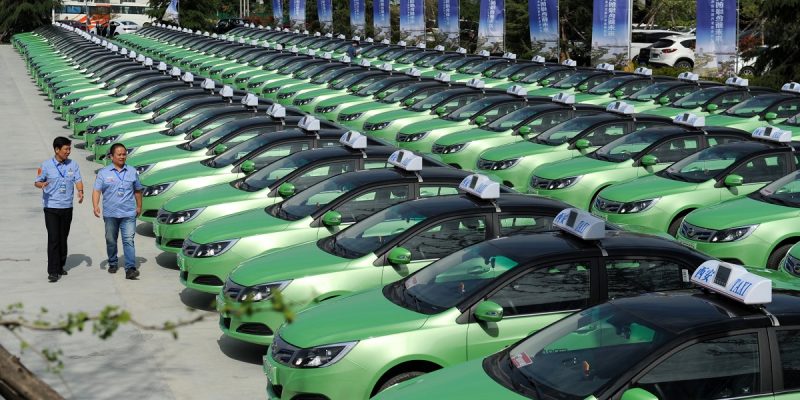As the transition to a low-carbon economy continues apace, organizations are turning to electric EVs and setting goals to reduce emissions and improve operational fleet efficiency.
As a result, fleet operators are focusing more attention on fleet management services and systems (FMS), particularly in terms of the management of fleet operations related to the use of ELD [Electronic Logging Devices], fault monitoring and vehicle health monitoring. At the same time they are concerned over how different EV fleet use cases, like freight, last mile delivery, enterprise and supply chain, will require different fleet management services such as home charging, road tolling, geo-fencing and L1–DC fast charging.
Step change
According to Charlotte Argue, senior manager, fleet electrification at Geotab, for ELD purposes the transition to EVs should be seamless for fleet operators as long as their telematics provider includes EV support. “Hours of service, driving time, driving distance and so on can all be captured for EVs, and included in ELD HOS reports,” she says.
Argue also highlights the fact that EVs won’t have all of the same fault warnings as a gas or diesel truck. For example, there will be no oil pressure to check or overheating, no engine to misfire, or filters to change, and overall fewer high-wear components – a difference she believes translates to a different, and much simpler, preventative maintenance schedule.
“Fleet operators may wish to monitor their batteries’ state of health (SOH). SOH will decline naturally over time but accelerated battery degradation could be cause for concern, and may be covered by the manufacturer’s warranty,” she says.
Elsewhere, Imogen Pierce, head of PR at Arrival, explains that the company has benefited from the opportunity to design its electric vehicles from the ground up and completely from scratch, meaning it is unencumbered by legacy technologies and can instead implement really smarter and more connected solutions.
“With end-to-end connectivity we can use FMS solutions to perform predictive maintenance for vehicles, over-the-air updates and understand charging needs based on the activity of the fleet, for example, the next time a vehicle needs to leave, or how far it needs to go. Switching to electric represents an enormous opportunity to manage fleets in a really intelligent and efficient way,” she says.
In her view, the process of switching to electric vehicles is daunting because it requires fleet operators to adopt a few behavioral changes and adapt the way they think about their individual vehicle or fleet. However, while it may seem like a step change, she is keen to stress it is a change akin to the transition from written letters to email.
“Ultimately the latter has seamlessly become ubiquitous and made our communications quicker and more efficient. It’s the responsibility of technology companies and automakers to help educate customers to allay any concerns as early as possible as well as creating technology that can adapt for individual customer needs,” she says.
EV fleet use cases
When it comes to adapting to different EV use cases, Argue suggests that data relating to factors, like daily use where vehicles dwell and for how long or where they park overnight and route predictability, will all impact on the strategy for deploying and managing EVs, particularly relevant for choosing charging locations and station level. Variables like trip type and vocation will also affect vehicle selection, particularly when it comes to assessing daily range requirements and which vehicle is dispatched for which assignment.
“Fleets with a central depot, where all vehicles park at night or in jurisdictions with time of use electricity rates, should consider smart charge technology to reduce electricity costs and peak demand charge,” she says. “For example, smart charging stations can have load or energy management technology or be integrated with building energy management. Smart charging can become even smarter by incorporating individual vehicles’ duty cycle and state of charge, allowing the system to prioritize vehicle charging.”
Argue also highlights several potential charging scenarios. For return-to-base urban delivery ‘hub and spoke’ systems, featuring L2 charging at a fleet yard, and for return-to-base delivery fleets with moderate daily driving distances, she urges managers to consider smart charging technologies like load-management for overnight charging to prevent demand spikes that can lead to high demand charges at facilities.
“For long-stop hub and spoke, or daytime tours with long stops, a combination of L2 fleet yard and customer or destination charging is useful. If short-stop hub and spoke with longer driving distances, consider a combination of L2 at fleet yard and DCFC at destination or customer sites, or en route. Prioritize DCFC for vocations where utilization is high and dwell time is low, for example taxi services,” she adds.
By Andrew Williams
Source: https://www.tu-auto.com
CUT COTS OF THE FLEET WITH OUR AUDIT PROGRAM
The audit is a key tool to know the overall status and provide the analysis, the assessment, the advice, the suggestions and the actions to take in order to cut costs and increase the efficiency and efficacy of the fleet. We propose the following fleet management audit.




